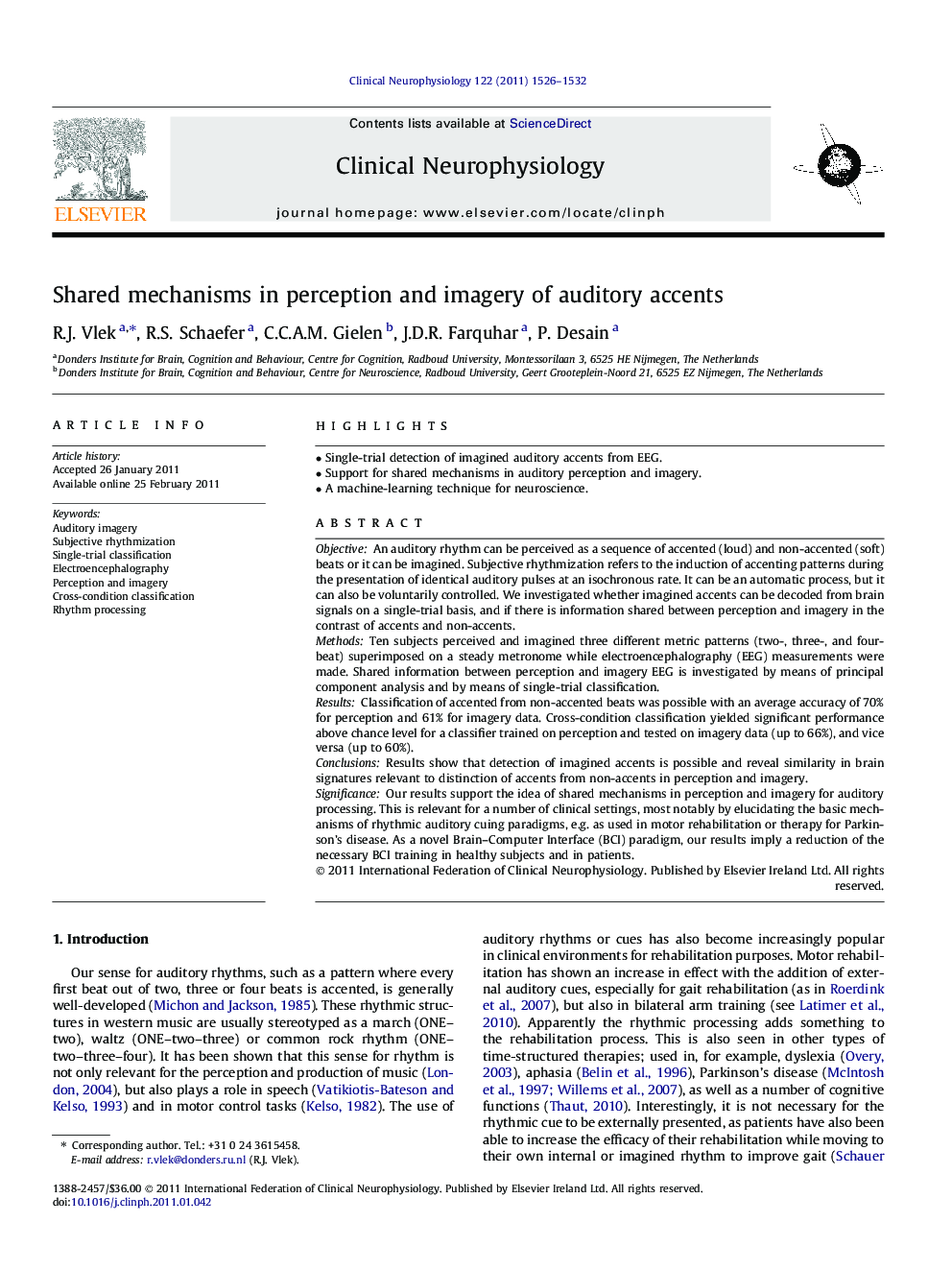| Article ID | Journal | Published Year | Pages | File Type |
|---|---|---|---|---|
| 3044015 | Clinical Neurophysiology | 2011 | 7 Pages |
ObjectiveAn auditory rhythm can be perceived as a sequence of accented (loud) and non-accented (soft) beats or it can be imagined. Subjective rhythmization refers to the induction of accenting patterns during the presentation of identical auditory pulses at an isochronous rate. It can be an automatic process, but it can also be voluntarily controlled. We investigated whether imagined accents can be decoded from brain signals on a single-trial basis, and if there is information shared between perception and imagery in the contrast of accents and non-accents.MethodsTen subjects perceived and imagined three different metric patterns (two-, three-, and four-beat) superimposed on a steady metronome while electroencephalography (EEG) measurements were made. Shared information between perception and imagery EEG is investigated by means of principal component analysis and by means of single-trial classification.ResultsClassification of accented from non-accented beats was possible with an average accuracy of 70% for perception and 61% for imagery data. Cross-condition classification yielded significant performance above chance level for a classifier trained on perception and tested on imagery data (up to 66%), and vice versa (up to 60%).ConclusionsResults show that detection of imagined accents is possible and reveal similarity in brain signatures relevant to distinction of accents from non-accents in perception and imagery.SignificanceOur results support the idea of shared mechanisms in perception and imagery for auditory processing. This is relevant for a number of clinical settings, most notably by elucidating the basic mechanisms of rhythmic auditory cuing paradigms, e.g. as used in motor rehabilitation or therapy for Parkinson’s disease. As a novel Brain–Computer Interface (BCI) paradigm, our results imply a reduction of the necessary BCI training in healthy subjects and in patients.
► Single-trial detection of imagined auditory accents from EEG. ► Support for shared mechanisms in auditory perception and imagery. ► A machine-learning technique for neuroscience.
